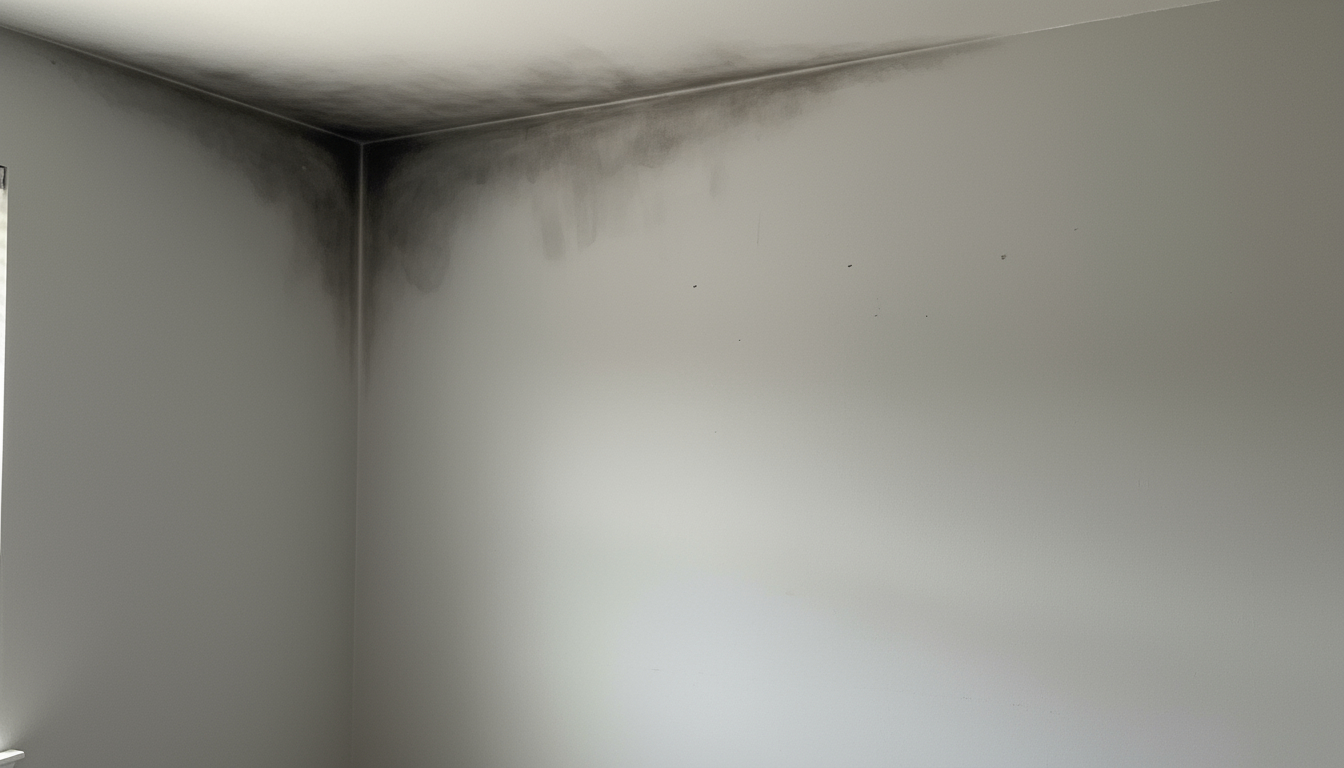What is Fire and Smoke Damage?
Fire and smoke damage encompasses the complete spectrum of destruction caused by flames, heat, smoke, and firefighting efforts. While fire consumes materials through combustion, smoke damage occurs when airborne particles and gases penetrate surfaces throughout a structure. Think of smoke damage like an invasive dye—microscopic particles infiltrate every porous surface, leaving behind corrosive residues that continue causing damage long after the fire ends.
Engaging the service of professionals for fire and smoke damage remediation is crucial for ensuring that all aspects of damage are addressed comprehensively.
The damage extends beyond what’s visible. Fire compromises structural integrity through charring and heat weakening, while smoke particles measure just 0.1-4 microns—small enough to penetrate electronics, HVAC systems, and wall cavities. Water damage from firefighting efforts adds another layer of destruction, with properties absorbing hundreds to thousands of gallons during suppression activities.
Professional remediation service addresses four damage categories simultaneously: thermal damage from heat exposure, smoke residue contamination, water damage from suppression efforts, and structural compromise from combined effects. Each category requires specific expertise and equipment, making comprehensive professional fire and smoke damage restoration company services essential for complete recovery.
The expertise of fire and smoke damage remediation specialists guarantees that the recovery process is effective and thorough.
How Does Fire and Smoke Damage Occur?
Understanding how fire and smoke damage develops helps property owners grasp why professional remediation service proves so complex and critical.
Knowledge of fire and smoke damage restoration company procedures is essential for property owners to prevent further complications.
The Eight-Stage Process
1. Ignition Phase: Fire begins consuming nearby materials, releasing heat, smoke, and gases
2. Growth Stage: Flames spread following fuel sources, temperatures reach 1,000-1,500°F
3. Smoke Production: Incomplete combustion creates smoke particles and toxic gases
4. Thermal Expansion: Hot smoke and gases rise, spreading throughout structure
5. Particle Deposition: Cooling smoke deposits residues on surfaces via thermophoresis
6. Chemical Reactions: Acidic residues begin corroding metals within hours
7. Moisture Interaction: Firefighting water activates acids, accelerating damage
8. Continued Migration: HVAC systems spread contamination to unaffected areas
Understanding the fire and smoke damage remediation stages helps property owners prepare for the recovery process with their chosen service company.
💡 Pro Tip: Smoke travels far beyond fire’s reach. Properties can suffer significant smoke damage from fires in adjacent units or buildings, requiring professional assessment from a remediation company even without direct flame exposure.
The physics of smoke movement follows predictable patterns. Hot smoke rises until hitting barriers, then spreads horizontally seeking cooler areas. As temperatures drop, particles become “sticky,” adhering to surfaces through electrostatic attraction. This process deposits heaviest residues on cooler surfaces—explaining why exterior walls and windows often show worse contamination than areas near the fire source.
Types of Fire and Smoke Damage
Different fire types produce distinct damage patterns requiring specialized remediation service approaches. Understanding these categories helps explain varying restoration complexities.
Protein Fires
Protein fires result from burning organic materials like food, creating nearly invisible residues that drastically affect properties. Common in kitchen fires, protein smoke leaves a clear, lacquer-like coating on surfaces. While walls might appear undamaged, this invisible film creates persistent odors and discoloration over time.
Protein residues prove particularly challenging because standard cleaning often spreads contamination. The greasy film requires specialized degreasing agents and techniques from experienced service companies. Without proper treatment, protein odors resurface during humid conditions for years after the fire.
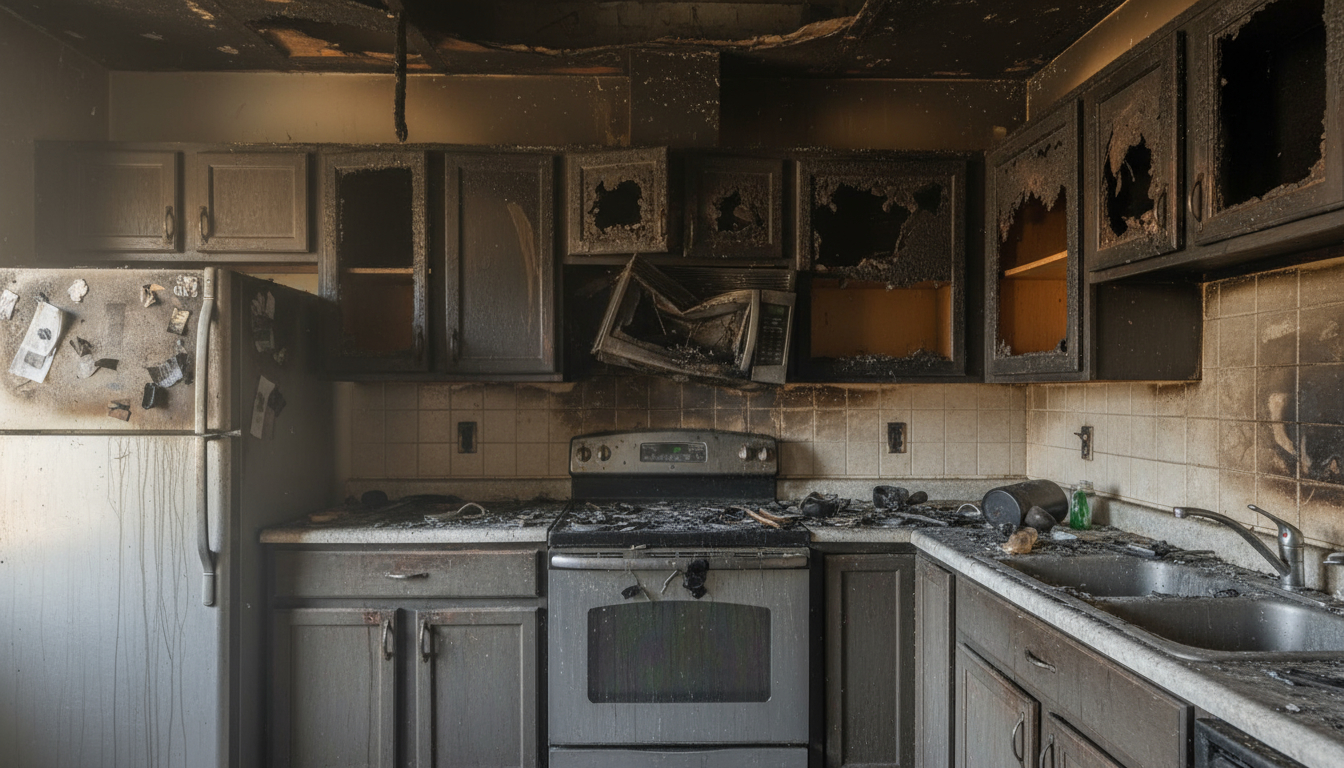
Complex Fires
Most structure fires involve multiple fuel sources creating complex smoke. Natural materials (wood, fabric, paper) burn alongside synthetics (plastics, electronics, foam), producing varied residue types. Complex fires generate wet smoke below 250°F and dry smoke above 450°F, each requiring different cleaning methods from remediation service teams.
Therefore, the importance of fire and smoke damage remediation company expertise cannot be overemphasized, as it plays a vital role in property recovery.
These fires typically produce the heaviest contamination, with residues ranging from dry, powdery ash to sticky, smeary deposits. Restoration often requires multiple cleaning techniques applied systematically by professional service teams to address varying residue types throughout the property.
Furnace Puffbacks
Furnace malfunctions create “puffbacks”—explosive ignitions sending soot throughout homes via HVAC systems. These incidents deposit oily, petroleum-based residues on every surface reached by air circulation. A single puffback can contaminate an entire home within seconds, requiring comprehensive cleaning service from experienced remediation companies.
Professional fire and smoke damage remediation is necessary to prevent soot from settling into hard-to-reach areas.
Puffback soot contains petroleum products making it especially difficult to clean. The oily residue smears easily, potentially causing permanent staining if improperly handled. Professional remediation companies use specialized solvents and techniques preventing damage spread during cleaning service.
To manage these challenges, effective fire and smoke damage remediation service strategies are critical.
| Fire Type | Temperature Range | Residue Character | Odor Intensity | Cleaning Difficulty |
|---|---|---|---|---|
| Protein | Low (200-300°F) | Clear, sticky film | Extreme | Very High |
| Wet Smoke | Low-Medium (250-400°F) | Sticky, smeary | High | High |
| Dry Smoke | High (450°F+) | Dry, powdery | Moderate | Moderate |
| Fuel Oil | Variable | Oily, dense | High | Very High |
Wildfire Smoke Damage
Wildfire smoke affects properties miles from actual fires, infiltrating through smallest openings. This smoke contains unique compounds from burning vegetation, creating distinct restoration challenges. Properties exposed to wildfire smoke for extended periods accumulate residues in HVAC systems, insulation, and porous materials requiring specialized company service.
Wildfire smoke damage requires specialized fire and smoke damage remediation techniques from experienced service companies to address unique challenges.
⚠️ Important: Wildfire smoke contains higher concentrations of formaldehyde and acrolein than structure fires, requiring specialized safety equipment and cleaning protocols to protect remediation company workers and occupants.
The Complete Fire Damage Recovery Process
Professional fire remediation service follows systematic protocols ensuring thorough recovery while minimizing secondary damage.
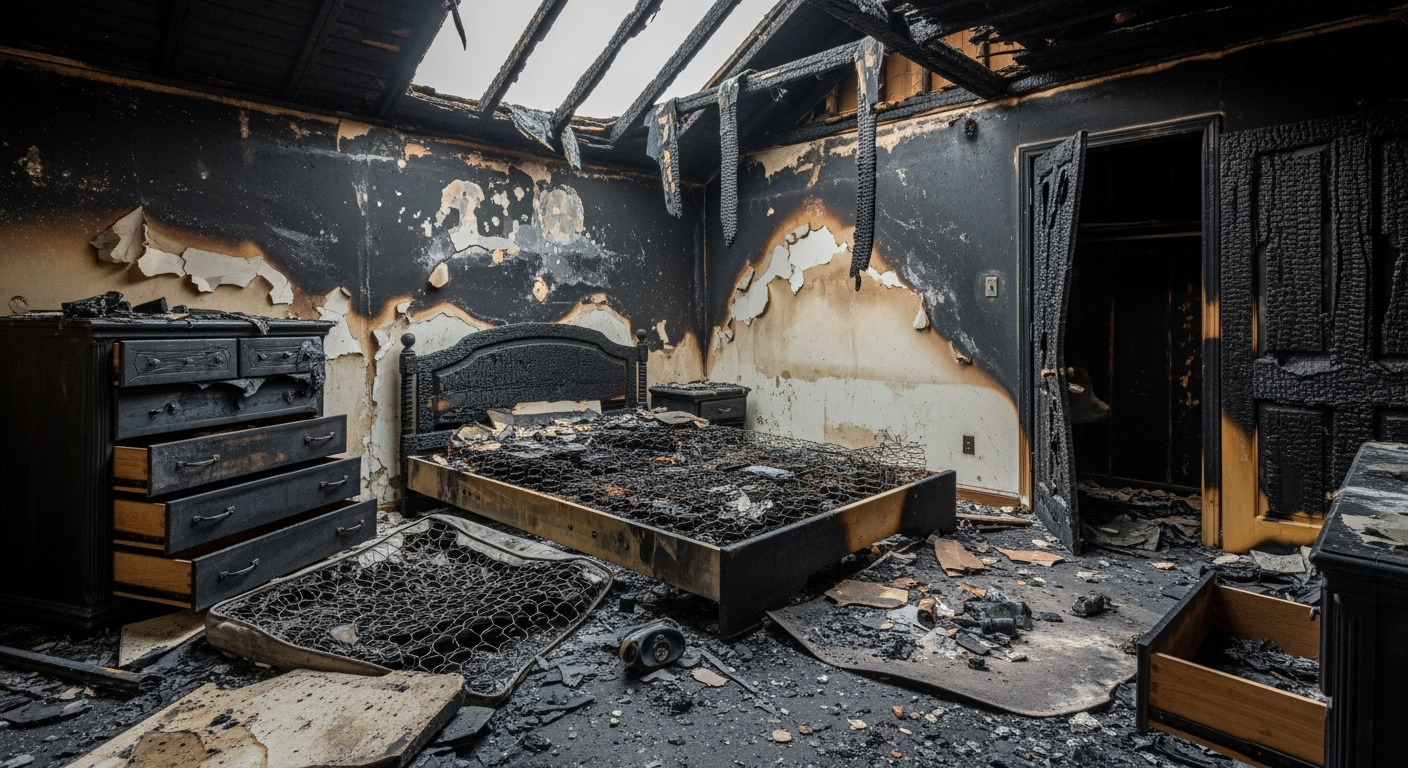
Emergency Response and Securing
Immediate response within 24-48 hours prevents secondary damage from weather exposure, vandalism, and residue migration. Emergency response service companies begin with property stabilization including board-up service, roof tarping, and corrosion mitigation on metal surfaces.
Initial securing includes installing temporary fencing, boarding windows and doors, and covering roof openings. Remediation service teams apply corrosion inhibitors to metal surfaces preventing acid damage from smoke residues. This immediate response from experienced companies reduces overall restoration complexity by preventing additional damage.
The role of fire and smoke damage remediation company service in preventing further damage emphasizes its significance.
Damage Assessment and Documentation
Comprehensive assessment identifies all damage types and affected areas. Company technicians test residue types determining appropriate cleaning methods. Thermal imaging identifies heat damage within walls, while moisture meters detect water from firefighting efforts. This assessment creates the remediation roadmap and insurance documentation.
Every damaged item receives detailed documentation including photos, descriptions, and restoration potential evaluation. This inventory supports insurance claims while tracking items through the remediation service process. Professional company software calculates restoration versus replacement costs optimizing claim settlements.
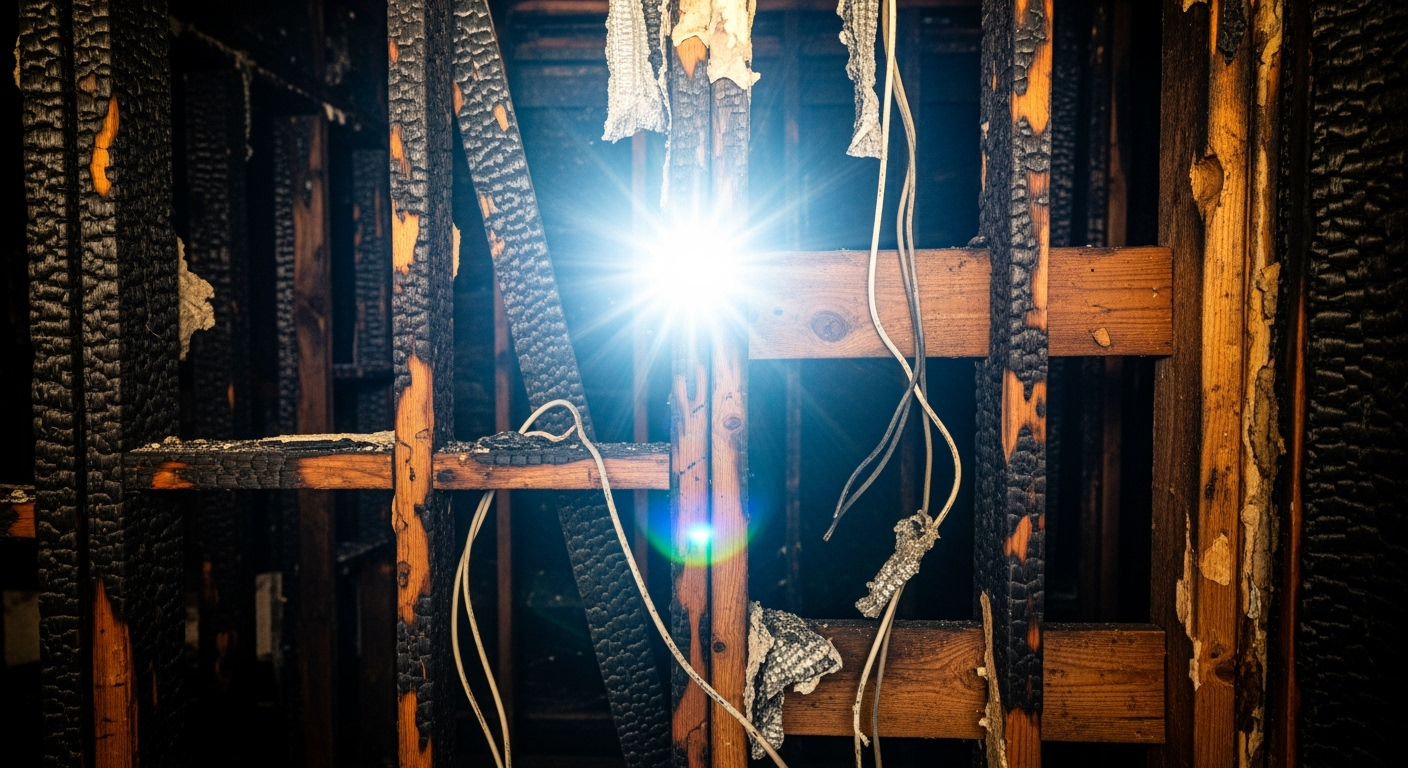
Efficient fire and smoke damage remediation service processes minimize the impact of water damage caused by firefighting efforts.
Water Extraction and Drying
Firefighting efforts often cause significant water damage requiring immediate extraction service. Standing water is removed using powerful pumps and extractors, followed by strategic placement of air movers and dehumidifiers. Moisture trapped in walls and structures must reach acceptable levels before remediation proceeds.
Water damage combined with smoke residues accelerates mold growth, making rapid drying critical. Professional service company equipment achieves optimal drying within 3-5 days, preventing mold colonization that complicates remediation.
Soot and Smoke Removal
Systematic residue removal begins with dry cleaning methods preventing damage from moisture introduction. HEPA vacuuming captures loose particles before wet cleaning addresses adhered residues. Different surfaces require specific techniques from remediation service professionals—dry sponging for walls, immersion cleaning for contents, and abrasive methods for structural materials.
Chemical sponges designed for smoke damage lift residues without moisture, preserving sensitive surfaces. Ultrasonic cleaning tanks restore intricate items through high-frequency sound waves. Each cleaning method employed by remediation companies targets specific residue types maximizing restoration success.
Odor Elimination
Smoke odor elimination requires neutralizing molecules at their source, not masking smells. Thermal fogging penetrates materials matching original smoke paths, while ozone treatments oxidize odor molecules. Hydroxyl generators provide safe treatment allowing occupied spaces during company service treatment.
For complete recovery, expert fire and smoke damage remediation service practices are necessary.
Sealed surfaces trap odors requiring specialized primers before painting. HVAC systems need complete cleaning and deodorization service preventing recontamination. Multiple treatment methods often combine through professional company expertise achieving complete odor elimination.
Restoration and Reconstruction
Final restoration returns properties to pre-loss condition through repairs and reconstruction. Minor restoration includes painting, carpet replacement, and drywall repairs. Major restoration might involve structural repairs, room reconstruction, or complete interior rebuilding by experienced service companies.
Professional remediation service coordinates multiple trades ensuring code compliance and quality workmanship. Commercial properties often require accelerated schedules from restoration companies minimizing business interruption while maintaining remediation quality.
Health and Safety Concerns
Fire and smoke create numerous health hazards persisting long after visible damage is addressed. Understanding these risks emphasizes why professional remediation company service with proper safety protocols proves essential.
Toxic Smoke Components
Modern structure fires produce over 400 identified toxic compounds including carbon monoxide, hydrogen cyanide, and phosgene. Synthetic materials release dioxins, furans, and volatile organic compounds (VOCs) causing respiratory issues, neurological effects, and cancer risks. These toxins absorb into porous materials continuing off-gassing for months without proper remediation service treatment.
Particulate matter from smoke measures PM2.5 or smaller, penetrating deep into lungs causing inflammation and cardiovascular stress. Children, elderly, and those with pre-existing conditions face heightened vulnerability to smoke exposure effects requiring professional company intervention.
Structural Hazards
Fire compromises structural integrity in ways not always visible. Heat weakens steel at 1,000°F, reducing strength by 50%. Wood chars at 1/8 inch per minute, potentially compromising load-bearing capacity. Concrete spalls and cracks from thermal shock, creating falling hazards.
Professional assessment from remediation service companies identifies structural dangers before restoration begins. Engineers evaluate load-bearing elements ensuring safety throughout recovery. Hidden damage in walls and ceilings poses ongoing risks without proper company evaluation.
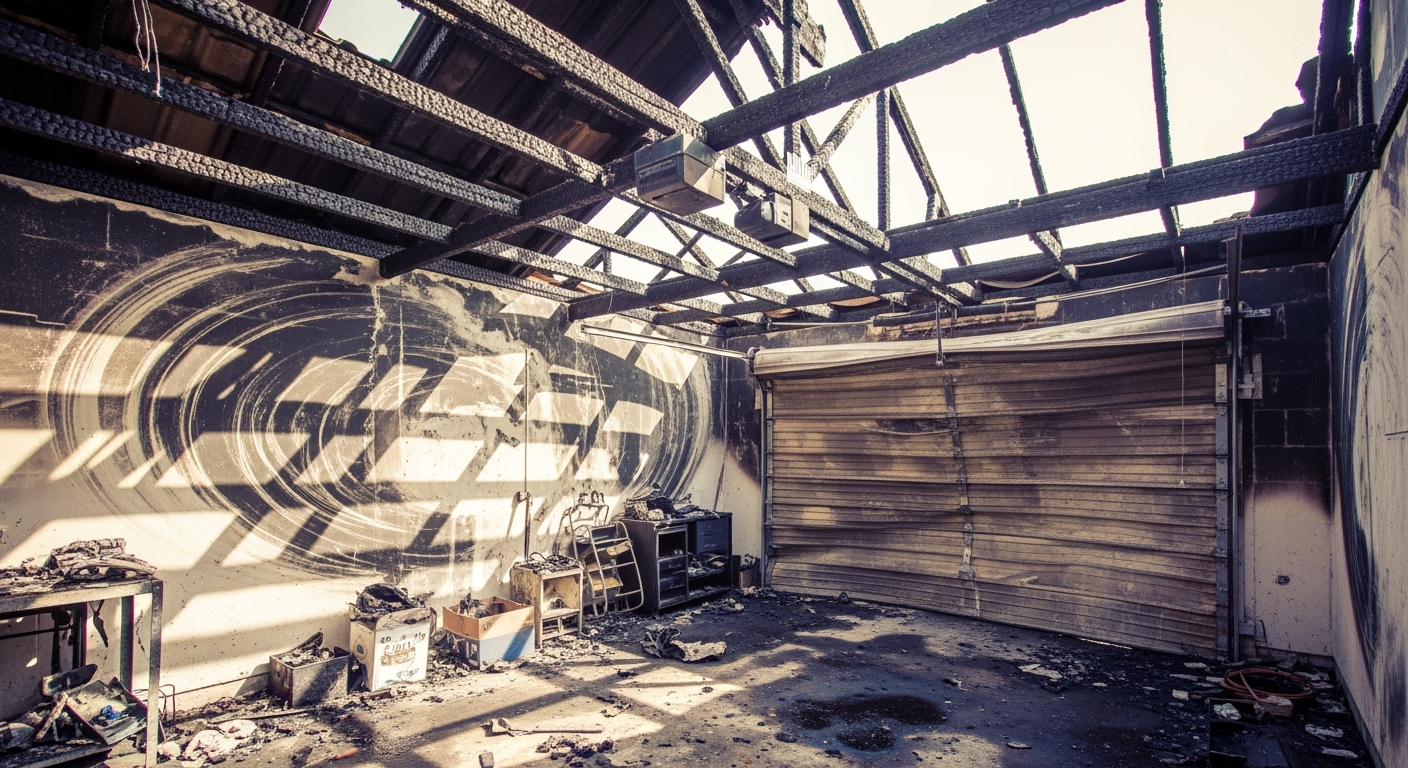
Asbestos and Lead Concerns
Properties built before 1980 may contain asbestos and lead-based paints. Fire damage can disturb these materials creating airborne hazards. Asbestos fibers become friable during fires, while lead paint chars and flakes creating inhalation and ingestion risks requiring specialized remediation company service.
🏠 Home Tip: Never attempt DIY cleanup in older properties after fires. Professional testing for asbestos and lead by certified service companies is essential before any disturbance of damaged materials. Improper handling creates long-term health risks exceeding original fire damage.
Smoke Odor Science and Elimination
Smoke odors persist because microscopic particles penetrate deep into porous materials, continuously releasing volatile compounds. Understanding odor science explains why simple cleaning fails and professional remediation service techniques succeed.
How Smoke Odors Persist
Smoke particles measuring 0.1-4 microns infiltrate materials far below surface level. Temperature changes and humidity fluctuations cause materials to expand and contract, releasing trapped particles. This explains why smoke odors resurface months or years after inadequate cleaning without proper company service.
Odor molecules bond chemically with surfaces through a process called adsorption. Breaking these bonds requires specific techniques from remediation companies matching the original penetration method. Surface cleaning alone cannot reach deeply embedded particles causing persistent odors.
Professional Deodorization Techniques
Thermal Fogging: Heated deodorizing agents create microscopic droplets matching smoke particle size. Fog penetrates identical paths as original smoke, neutralizing odors at their source. This technique employed by remediation service companies proves especially effective for extensive smoke damage throughout structures.
Ozone Treatment: Ozone generators produce O₃ molecules oxidizing odor-causing compounds. Treatment requires evacuating people and pets as ozone irritates respiratory systems. Typical treatment by professional companies runs 24-48 hours achieving deep deodorization.
Hydroxyl Generators: These systems produce hydroxyl radicals safely eliminating odors in occupied spaces. While slower than ozone, hydroxyl allows normal activities during service treatment. Extended treatment over 3-7 days by remediation companies provides thorough deodorization.
Encapsulation: Specialized sealers trap remaining odor molecules preventing release. Applied after cleaning by service companies, these products create barrier films on surfaces. Encapsulation provides final odor control for materials that cannot be completely deodorized through standard remediation service.
Contents Restoration Process
Personal belongings often hold irreplaceable sentimental value making contents restoration a critical component of fire recovery service. Professional techniques from experienced companies restore items deemed unsalvageable through conventional cleaning.
Pack-Out and Inventory
Severely damaged properties require contents pack-out for off-site restoration. Each item receives detailed documentation including photos, barcode tracking, and condition assessment by remediation service teams. This systematic approach ensures nothing gets lost while supporting insurance claims.
Climate-controlled facilities protect contents during structure remediation. Segregation prevents cross-contamination between cleaned and uncleaned items. Secure storage with 24/7 monitoring by professional companies protects valuables throughout the restoration service process.
Specialized Cleaning Methods
Different materials require specific cleaning techniques from remediation companies preventing damage during restoration:
– Ultrasonic Cleaning: High-frequency sound waves create microscopic bubbles removing contamination from intricate items
– Dry Cleaning: Chemical sponges and specialized vacuums clean without moisture introduction
– Wet Cleaning: Appropriate detergents and techniques for moisture-tolerant materials
– Immersion Cleaning: Complete submersion in cleaning solutions for thorough contamination removal
– Abrasive Cleaning: Controlled media blasting for structural materials and appropriate surfaces
– Foam Cleaning: Specialized foams lift contamination from upholstery and carpets
These specialized cleaning methods are integral to the fire and smoke damage remediation service process provided by professional companies.
Electronics Restoration
Electronic devices suffer from both smoke residue and corrosion requiring specialized cleaning service. Circuit boards undergo ultrasonic cleaning removing conductive residues preventing shorts. Professional electronics remediation companies achieve 70-80% success rates for smoke-damaged devices.
Time proves critical for electronics restoration. Corrosion begins within hours of smoke exposure, becoming irreversible within 48-72 hours. Immediate professional company intervention maximizes restoration success for computers, appliances, and electronic systems.
Document and Photo Recovery
Irreplaceable documents and photographs receive priority handling using specialized techniques from remediation service companies. Freeze-drying prevents further deterioration while planning restoration. Gamma irradiation eliminates mold without damaging paper. Digital scanning preserves damaged originals before physical restoration attempts by specialized companies.
💡 Pro Tip: Handle smoke-damaged photos minimally before professional treatment by a remediation company. Oils from skin combined with smoke residues cause permanent staining. Place photos in plastic bags preventing further contamination until restoration service begins.
Timeline and Phases of Recovery
Understanding the phases of fire and smoke damage remediation company service can help manage expectations during recovery.
Understanding restoration timelines helps property owners plan during a challenging period. While every situation differs, typical recovery through professional service follows predictable phases.
Immediate Response (0-48 Hours)
First 48 hours prove critical for preventing secondary damage. Emergency securing, corrosion mitigation, and water extraction service occur immediately. Initial assessment and insurance notification begin the formal remediation process with your chosen company.
Property owners should document everything, contact insurance immediately, and avoid disturbing evidence until adjusters complete inspection. Temporary housing arrangements and essential items recovery takes priority during this phase while remediation companies mobilize.
Assessment and Planning (Days 2-7)
Detailed damage assessment and restoration planning occur once properties are secured by service companies. Insurance adjusters inspect damage while remediation professionals develop comprehensive recovery plans. Contents pack-out and initial cleaning begin for salvageable areas.
This phase involves multiple decisions about restoration versus replacement. Professional company guidance helps optimize insurance claims while preserving important belongings. Remediation service contracts and schedules are finalized during this period.
Active Restoration (Weeks 2-8)
Intensive remediation work proceeds with multiple activities occurring simultaneously. Structural cleaning, odor treatment, and contents restoration progress while reconstruction planning begins. Regular monitoring by service companies ensures restoration goals are met.
| Restoration Phase | Typical Duration | Primary Activities | Property Owner Actions |
|---|---|---|---|
| Emergency | 0-48 hours | Securing, mitigation service | Insurance contact, documentation |
| Assessment | 2-7 days | Inspection, planning by company | Decision making, approvals |
| Cleaning | 1-4 weeks | Residue removal, deodorization service | Content decisions, monitoring |
| Restoration | 2-8 weeks | Repairs, reconstruction by company | Material selections, inspections |
| Completion | Final week | Final cleaning service, move-in prep | Walk-through, acceptance |
Reconstruction Phase (Weeks 4-12)
Major reconstruction begins after cleaning completion by remediation service teams. Structural repairs, electrical system restoration, and interior rebuilding proceed systematically. This phase requires coordination between multiple trades and companies maintaining quality and schedule.
Property owners make numerous decisions about finishes, fixtures, and upgrades during reconstruction. Insurance coverage may allow improvements beyond original conditions. Clear communication with restoration service companies ensures expectations are met.
Insurance Considerations
Navigating insurance claims after fire damage requires understanding coverage types and claim procedures. Proper documentation and professional remediation company support maximize settlements ensuring complete restoration.
Coverage Types
Having proper coverage for fire and smoke damage remediation service ensures financial protection during recovery.
Standard policies typically cover fire damage under dwelling coverage, with separate limits for personal property and additional living expenses. Replacement cost coverage provides funds for new items while actual cash value policies depreciate for age. Understanding policy specifics before losses helps manage expectations during claims with remediation companies.
Smoke damage from neighboring properties may fall under different coverage requiring careful policy review. Business interruption insurance proves critical for commercial properties covering lost income during remediation service.
Documentation Requirements
Comprehensive documentation supports maximum claim recovery. Photograph and video all damage before any cleanup begins. Create detailed inventories listing damaged items with descriptions, age, and values. Save receipts for emergency expenses and temporary living costs incurred during company service.
Professional remediation companies provide detailed estimates using insurance-standard pricing software. These documents carry more weight with adjusters than homeowner-generated lists. Maintain copies of all correspondence and claim documentation throughout the service process.
Working with Adjusters
Insurance adjusters assess damage determining claim values, but they represent insurance company interests. Consider hiring public adjusters for large losses—they represent policyholder interests typically increasing settlements by 30-50% after fees. Document all conversations and agreements with adjusters in writing during the remediation service process.
⚠️ Important: Never accept initial settlement offers without careful review. Insurance companies often undervalue claims initially. Professional remediation service contractors help identify overlooked damage ensuring complete coverage.
Working with adjusters is a key step in securing the necessary funds for fire and smoke damage remediation company services.
Prevention and Preparedness
While fires cannot always be prevented, preparedness reduces damage severity and accelerates recovery through professional service.
Fire Prevention Measures
Electrical systems cause 51,000 fires annually—regular inspection by qualified service companies prevents most electrical fires. Kitchen fires account for 49% of residential fires—never leave cooking unattended. Heating equipment causes 15% of home fires—maintain clearances around heat sources.
Install smoke detectors on every level and in bedrooms, testing monthly and replacing batteries annually. Keep fire extinguishers in kitchens and garages, ensuring everyone knows proper operation. Develop and practice escape plans with two exits from every room, and maintain contact information for remediation companies.
Pre-Loss Planning
Document belongings before disasters strike. Photograph each room and valuable items storing images off-site or in cloud storage. Maintain inventory lists with purchase dates and values. Keep important documents in fireproof safes or safety deposit boxes. Research remediation service companies in advance.
🏠 Home Tip: Create a home inventory video walking through your property narrating items and their significance. Update annually adding new purchases. This documentation proves invaluable during insurance claims after fires when working with remediation companies.
Emergency Response Plan
Develop family emergency plans including evacuation routes, meeting locations, and emergency contacts. Program 24-hour restoration service companies into phones for immediate access. Identify temporary housing options and understand insurance coverage for additional living expenses during remediation.
Prepare emergency kits including medications, important documents copies, cash, and essential items. Store kits in accessible locations allowing quick evacuation. Review and practice plans regularly ensuring everyone understands procedures and knows which remediation company to contact.
Common Mistakes During Fire Recovery
Understanding common mistakes helps property owners avoid complications delaying recovery service.
Delayed Response
Waiting to begin remediation allows secondary damage progression. Smoke residues become increasingly difficult to remove after 72 hours. Corrosion on metals becomes permanent within days. Water damage develops mold within 24-48 hours. Immediate professional company response minimizes overall damage and restoration complexity.
DIY Cleaning Attempts
Understanding the significance of fire and smoke damage remediation company expertise helps avoid common pitfalls.
Improper cleaning techniques spread contamination and cause permanent damage. Using wrong cleaning products sets stains permanently. Water-based cleaning on smoke residues creates acidic solutions causing additional damage. Professional service techniques and products prevent damage while achieving superior results.
Inadequate Documentation
Failing to document damage thoroughly reduces insurance settlements. Disposing of damaged items before documentation eliminates claim evidence. Not keeping receipts for emergency expenses prevents reimbursement. Comprehensive documentation throughout the remediation service process protects your interests.
Choosing Unqualified Contractors
Selecting restoration contractors based solely on price often results in incomplete work requiring expensive corrections. Verify proper licensing, insurance, and certifications before hiring any company. Check references and online reviews confirming quality service. Professional remediation companies like regional restoration experts provide comprehensive service ensuring complete recovery.
Environmental Impact and Disposal
Fire damage creates significant waste requiring proper disposal protecting environmental and human health. Understanding disposal requirements ensures compliance while minimizing environmental impact through responsible company service.
Hazardous Materials Handling
Fire-damaged materials often contain hazardous substances requiring special disposal service. Asbestos-containing materials need certified abatement companies. Electronics contain heavy metals requiring recycling at approved facilities. Chemical containers and batteries need hazardous waste disposal preventing environmental contamination.
Professional remediation companies manage hazardous materials disposal ensuring regulatory compliance. Improper disposal risks fines and environmental liability. Documentation of proper disposal service protects property owners from future liability.
Recycling and Waste Reduction
Many fire-damaged materials can be restored rather than replaced through professional service, reducing landfill waste. Metal items often restore completely through appropriate cleaning by remediation companies. Wood materials can be cleaned and refinished avoiding replacement. Contents restoration prevents unnecessary disposal of salvageable items.
Recycling programs accept many building materials including metals, concrete, and wood. Donation programs may accept restored items helping community members while reducing waste. Professional remediation companies emphasize restoration over replacement when possible through their service offerings.
Frequently Asked Questions
Addressing questions about fire and smoke damage remediation company service is critical for informed decision-making.
How quickly should I contact restoration professionals after a fire?
Contact remediation service companies within 24-48 hours after fire department clearance. Smoke residues become increasingly difficult to remove after 72 hours, and corrosion on metals becomes permanent within days. Immediate company response prevents secondary damage that can double restoration complexity and significantly impact recovery time and success.
Can I stay in my home during fire and smoke restoration?
Most fire-damaged properties require temporary relocation during remediation service due to health hazards from toxic residues, structural concerns, and restoration activities. Your insurance typically covers additional living expenses during this period. Professional company assessors determine habitability based on damage extent, air quality testing, and safety evaluations.
What’s the difference between smoke damage and fire damage restoration?
Fire damage involves structural destruction from flames and heat requiring reconstruction service, while smoke damage affects surfaces throughout the property through residue deposition and odor penetration. Smoke damage often extends far beyond fire areas, requiring specialized cleaning techniques and deodorization treatments from experienced remediation companies that differ from structural fire repairs.
Will my insurance cover all fire and smoke damage restoration?
Standard homeowners insurance typically covers fire damage under dwelling coverage, with separate limits for personal property and living expenses. However, coverage varies by policy type, deductibles, and limits. Document everything thoroughly and work with remediation service companies who understand insurance processes to maximize your settlement and ensure complete restoration.
Securing the right coverage for fire and smoke damage remediation company service can make a significant difference in recovery.
How long does complete fire damage restoration typically take?
Fire damage remediation service typically takes 2-12 weeks depending on damage severity. Minor smoke damage may resolve in 2-3 weeks with prompt company intervention, while extensive fire damage requiring reconstruction can take 3-6 months. Factors affecting timeline include damage extent, material availability, insurance processing, and required permits for reconstruction work.
Can electronics and appliances be saved after smoke damage?
Electronics and appliances can often be restored if addressed within 48-72 hours before corrosion becomes irreversible. Professional electronics remediation service companies achieve 70-80% success rates using ultrasonic cleaning to remove conductive residues. Time is critical—immediate professional company evaluation and treatment significantly improves restoration success for valuable electronic items.
Timely intervention is essential for successful fire and smoke damage remediation service of electronics and appliances.

